Blockchain Influencer
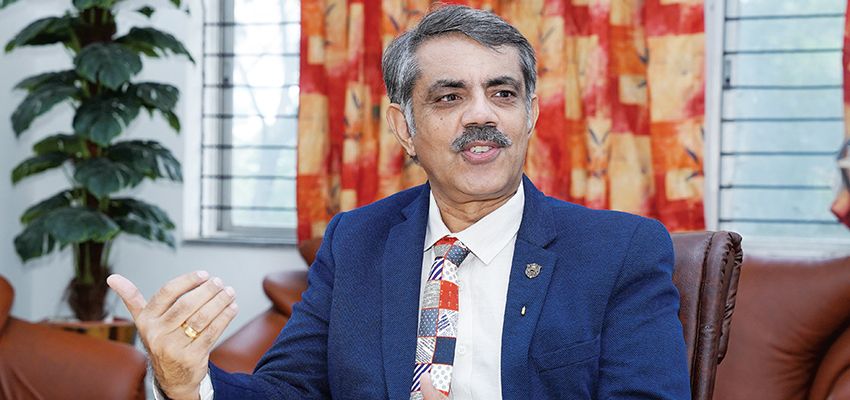
Blockchain think tank and influencer, Raj Kapoor, is the Founder of India Blockchain Alliance (IBA) and also cofounder of Governance Council, which represents the leaders of blockchain, metaverse, AI/ML, crypto, DeFi, fintech and digital BFSI ecosystem of India and the world. Raj Kapoor is a global, blockchain, cryptocurrency and fintech educator, Certified Bitcoin Professional (CBP), Blockchain Solution Architect. Besides blockchain, he is skilled in AI, robotics, cyber security, IoT, and cloud computing. He has designed and worked on 4 Blockchains, 5 centralised exchanges, 3 Swaps and 3 DEX's. Raj is now working with his team on India's own indigenous blockchain. He has authored courses in blockchain, fintech, DeFi, NFT’s, Metaverse and more, which have been implemented by edtech platforms like NASSCOM, NSDC, CII, UnAcademy, in India and overseas. Recently, Raj represented India at the G20 Working Committee on Crypto Policy
Raj Kapoor was the chief guest for inaugural day, at the recently organised two-day conference “Mimansa 2023”, which had panels discussing on the topic of “Innovative practices for sustainable business". The international research conference was organised by Sri Balaji University, Pune (SBUP) in association with Association of Indian Management Schools (AIMS). Raj Kapoor, inspired the audience with his presentational talk on how sustainable blockchain is the key for business growth.
In an exclusive interview with Corporate Citizen, Raj Kapoor, talked at length about his journey in blockchain industry, different aspects of the emerging technologies, crypto regulations and much more
"We need to adopt and adapt new technology, if we don’t we will be left behind. And, in G20 we have this opportunity to show that we are world leaders and take a stance and take a decision on crypto, on frameworks, NFTs, metaverse and all the things which are around that. We have a chance to become Web 3 leader of the world."
-Raj Kapoor
Corporate Citizen: Tell us how you got into the emerging technology tech field of blockchain and became one of the industry’s biggest think tanks and influencers, in India and abroad.
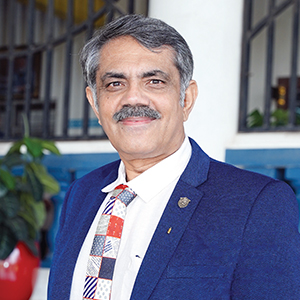
Raj Kapoor: I am originally from Amritsar, Punjab and was residing initially in Delhi city. But then I shifted to Mumbai and I have lived lot of my life in the city of Mumbai. My journey started where and when a lot of people’s journey ends. I started my blockchain journey in 2010— blockchain itself came about in the year 2008. Just before that I had just lost my wife in a car accident on the Mumbai-Pune Express Highway. Thereafter I was little bit depressed and was looking out to do something. I was in the US and studying with my friends together. In 2010 one of my friends introduced me to the concept of crypto mining, because at that time there was not much talk about blockchain, there was talk about Bitcoin. I started mining in 2010 and that taught me the fundamentals of technology called blockchain—Bitcoin is not blockchain and blockchain is not Bitcoin. So, my concept was very clear from there on, because I was very intrigued by the technology—I got to do it by accident. I am an accidental blockchain specialist.
I had always been into business space, I hardly liked working for someone. I am a blockchain myself—disintermediated, distributed and never in one place. I come from a non-technical background, but I learnt programming, I learnt to create blockchains, and today I can program in 18 different languages. I have created 4 blockchains, layer-one blockchains (even working on a layer zero blockchain) and lot of things in that space. Passion drove me and I became synonymous with the world of blockchain—in India almost everybody knows me in this space.
When blockchain started, banking is what it was intended for. Use cases increased as blockchain evolved and now it is for multiple users. Although the system is large like an elephant and it moves slowly, but it is powerful and when it runs it can really run fast.
CC: What made you start the India Blockchain Alliance (IBA) and how will the alliance help the blockchain industry in India?
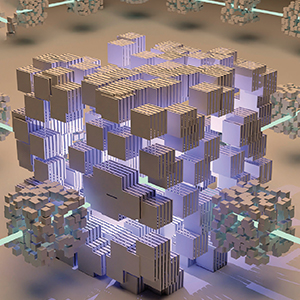
I believe that India has great potential for technology. We are a superpower, but we don’t have direction. We have always been a follower, never a leader in this space. So, in 2018, when I came down here—I was shuttling between the US and India—I decided to make my attempt to make India a superpower in blockchain, because I had by that time realised the power blockchain has and how it can actually impact economies. It is not just a technology; it is a frontier technology, which could create very strong social economic impact. When I started here, most people asked me only one question, “Sir, can I buy Bitcoins?”. I would tell that blockchain is not Bitcoins. I said that let me start by giving them the basics, from here. So, my journey started from 2018, by working with universities and colleges and today IBA works with more than 200 universities across India and outside, on blockchain technologies, with centres of technologies in all these places. We are spreading the knowledge of blockchain. We are not-for-profit—our idea is to create awareness about a technology in which India can become a leader.
CC: Tell us about the indigenous blockchain that you and your team are now working on, in India.
One of the biggest issues is data security. Today your data is stored at Google, Facebook, Amazon, all of these big companies. Our data is not with us—data should always remain within the nation. If data is outside the nation, anybody can access it and it can be misused. Today, blockchain is completely open and is in different parts of the world. So, to modify it for the nation, for the government, we need to create database at the edge, it is not outside. So, one of the things that my team are creating is - nodes within the nation, validators within the nation; people within the nation who will take care of these blockchains.
CC: Is the Indian Government establishing a national blockchain framework and how will that transform India's future? The government is not keen on connecting the blockchain with the crypto.
The government is very keenly working on that. I am part of another organisation called the Blockchain Governing Council—in that we are working very closely with the government on standards, compliance, frameworks, rules and regulations, taxations and so on. These are very critical for blockchain mass adoption. Right now it is very nascent technology, we don’t have rules and regulations—other countries have started putting and India is also discussing. With the G20 presidency, I believe that we can. We already missed the Web 1.0 and Web 2.0 stage, but with Web 3.0 we can be leaders. Crypto is fine, crypto is one use case of blockchain. Blockchain is a highway, crypto is one cycle, that’s all.
Today IBA works with more than 200 universities across India and outside, on blockchain technologies, with centres of technologies in all these places. We are spreading the knowledge of blockchain. We are not-for-profit—our idea is to create awareness about a technology in which India can become a leader.
CC: Crypto, blockchain and Web 3.0 are connected. Crypto is a bit controversial as of now and the government has banned it but also put up regulations. What is your say on that?
By bringing in some regulation for taxation, for example 30% tax on crypto profits, then bringing it under the money laundering act, and the 1% TDS—these three things are indication that we are working towards rules and regulations around crypto. We are not outright banning it, which is a good positive sign because we have to take steps—one-step at a time rather than taking a knee-jerk action which would blow up on our face. I think it is a really good initiative that the government is taking and that’s the way to go. We need to take steps to make sure that there is a sanctity of our data and our financial systems remains intact, while accepting new technology.
CC: Do you look forward for the government to change their outlook towards crypto? Because some say that it encourages parallel economy without government supervision.
That’s because it is disintermediated, but if you see what happened recently with Silicon Valley Bank (SVB)—a centralised bank controlled by the government and sixteenth largest bank in the USA—it collapsed. After that the Signature Bank collapsed and today Credit Suisse is at the end of its life. City Bank just sold its division in India to Axis Bank. This is happening because centralised systems are not working—you may think they are working.
Imagine, you have your money in an ‘xyz’ bank and tomorrow it collapses, what are you going to do? Your money is gone. In a decentralised way it is never gone, you can always access it 24x7. There is a need for a hybrid version of both—I am not saying one is better than the other. We need to bring in the best of both worlds and make a unique model, which becomes sacrosanct for next thousands of years. Right now its not there.
CC: Will India’s G20 presidency affect the crypto industry in India and abroad?
G20 forum is working very closely with International Monetary Fund (IMF), on creating certain standards around crypto. Today there are no standards and standards are very important. Anybody can make a crypto—I can sit down and by the end of the day make some crypto for you, in your name. But bottomline is, that’s not what’s required. We need to have certain standards. Today even the crypto exchanges—we got lot of exchanges in India—they don’t have standards. We at the Blockchain Governance Council are making relevant recommendations to the Government from time to time
CC: But, the widespread use of Dollar-dominated crypto is there.
That is called stable coin—stable coin also got shaken up by the SVB Bank collapse, because lot of stable coin reserves were with SVB. At the end of the day, either you accept the fact that there is going to be another parallel way of doing business, which is there in so many countries. We have recently done a research paper, to be released soon, which is a study on 147 countries and most of them are accepting the parallel way of doing business, because it’s a good hedge against inflation, a good hedge against collapsing of these kind of banks.
If a bank collapses— if I have say one lakh rupees in a bank and one lakh in crypto, I had my money say in SVB Bank, I wouldn’t have access to it, for example. But, here I would have access to 24x7, in any country, anywhere in the world. So, we need to bring convergence out there and that’s what’s important.
"We have released a concept of making Goa the largest Web 3 destination in the world. That has never happened before—it is to attract international investments and give employability to the youth, so they don’t have to go abroad to work. Instead of vacations, we are creating “workations” in Goa for them."
CC: What can you say about the risks associated with the crypto industry, like terrorism financing and money laundering?
Those things are now being mitigated—we are doing lot of work in crypto forensics. You can now start tracking and tracing, just like we track and trace realistic transactions or very odd transactions. The same thing is being done in the crypto space—crypto is anonymous and pseudo- anonymous. So, that becomes difficult to trace and therefore could be used for terrorist funding. But, the terrorist funding, if you look at numbers before crypto and after crypto—before crypto it was much more but after crypto they don’t use crypto anymore, because crypto can be traced back to them. They are still using the traditional forms. Terrorist funding existed before crypto and it will continue, that’s not going to change.
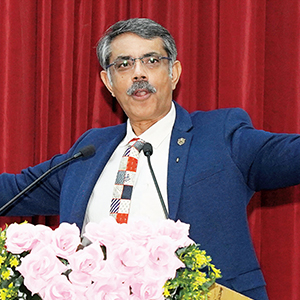
With money laundering it is the same— before we had Swiss Banks, where money was parked, today we work with crypto wallets. Its just that the technology now has become more digital. But, money can be traced, unlike few years back, when it could not be traced. If I would send you, I am just a code—a code is sending to a code. Nobody could track. Now there is more traceability and trackablity—that has become a big change now in the crypto world. Therefore, the adoption can become synonymous with good tech using traditional values. We need to use both, we cannot say one is better than the other.
We need to adopt and adapt new technology, if we don’t we will be left behind. And, in G20 we have this opportunity to show that we are world leaders and take a stance and take a decision on crypto, on frameworks, NFTs, metaverse and all the things which are around that. We have a chance to become Web 3 leader of the world. And, that’s my passion—I think we can.
CC: But, don’t you think this 30% tax on crypto profits, 1% TDS, heavily stifling the crypto industry?
If you have a look at the statistics after the 30% tax imposition, 32000 crores have flown out of India, to Dubai, Mauritius, Portugal and Cyprus. And, that’s not good because that’s money going out of your economy. We are trying to become a 5 Trillion economy without adopting the latest technology, that’s really strange. We can’t become a 5 Trillion economy without adopting change, otherwise money is going to leak out of the country. Not only money, if you see for the last few years, a lot of crypto companies and startups have moved out of India and into other countries.
Dubai has become the crypto capital of the world. That’s big scary thing, because startups are economy creators, job creators and also tax payers. You take them out of the equation—I call it the next brain-drain. The next brain-drain is happening now. That’s where the government needs to take a decision sometime this year. What is the policy? If there is no clarity in the policy, they will all go. There is no taxation in Dubai, so 30% is saved. As a business person I will weigh my pros and cons. It is just a question of time before either we make a rule and some of them come back, otherwise we will be losing money, resources, talent and patents, which basically make nations and we are losing all that. So, we need the regulations in place as soon as possible.
"We have over 55000 people employed in the blockchain space in India today, as per the latest NASSCOM report. By 2023 the requirement is going to be around 800 lakhs. So, this leap from 50000 to 8 lakhs in the next seven years, is of almost one lakh people required every year."
CC: What are your perceptions of Web 3 and its usages?
Web 3 is at a very pre-nascent stage right now. Web 3 is a decentralised web—today we are in Web 2, which is centralised. All the data which is available on Web 2, is with the people who are in power — the Google, Facebook all these companies have our data. Today they know where I am sitting—as long as my phone is on, they know where I am sitting. Everything is trackable and traceable—our data is sold multiple times and they make billions of dollars in that. Those billions of dollars should be ours, because the data is ours. Web 3 is changing that paradigm. We are still at an early stage, it will take another 5–8 years for it to really come through. But, there is a middle point called Web 2.5, which not many people talk about. The leap from Web 2 to Web 2.5 will happen in the next 2–5 years. In Web 1 it is all static and in Web 2, you put your user name and password, and enter. Web 3 will be a connect to Web 3 wallet.
CC: Today World Wide Web is acting like a global brain. How will Web 3 be different, using AI and ML?
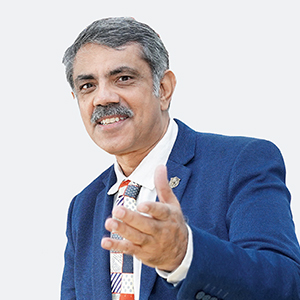
World Wide Web is already there and Web 3 is also going to be the same, only difference is the underlying technology. Web 2 is stealing your data. Web 3 will not steal your data, it will give you back your data, you decide if you want to share it and if you share it you will get rewarded for it. The rewarding mechanism and the ownership—today if I put something on YouTube, anybody can use it, take it and say it is mine. That want happen on Web 3. The content is going to be the king and content creators are going to get value for their content. In Web 3, once you log in a piece, you get encrypted and get a certificate of authenticity that it is yours. Whenever it moves from one place to other, somebody downloads it and use it, you will be rewarded with tokens or coins or some form of rewards like loyalty points. That’s yours and you can encash them. Today that system is not there.
For example, Steemit is Web 3, a blockchain- based blogging and social media website, where you upload your videos and for every like you get certain points. For every download you get points, every time somebody uses it and goes through, you get points. Those points can be used later for benefits while buying products online. So, there is a value in your data, which right now is not coming to you. The value on Web 3 will be backed with your name.
CC: Can Web 3 be one of the biggest factors to bring true India’s dream of 5 Trillion economy?
Yes, why 5 Trillion, we can even go more. When Web 1 came we were not prepared. When Web 2 came, that is where we are right now, we were not prepared. So, who took advantage of this Web 2? America and the Europe, and that’s why they have the data and they have the power. Web 3 has not taken off to that extent where they are reinventing. I think India can actually now say, “Listen, we have the talent and let’s make the rules and regulations. Let us make the Web 3 our phase and put together a Web 3 standard and polcy”. Also if you see very clearly, Shanghai is using Web 3 very effectively for economic growth. We must learn from that and step up and become the leaders, and we can become the leaders. So, the vision of 5 Trillion economy is absolutely within reach, but it want happen if we don’t adopt the new technologies.
CC: Will Web 3 or blockchain technologies reverse the brain-drain for India?
I have a brain and I stay in India. I came back from the USA and I am one of the guys who don’t want to stay in the US. I came back as I wanted to give back to my country. I m encouraging lots of investments into India from abroad. So, we get lot of FDIs, which helps our economy. I am also an advisor to the State of Goa. And, we have released a concept there, making Goa the largest Web 3 destination in the world. That has never happened before—it is to attract international investments and give employability to the youth, so they don’t have to go abroad to work. Instead of vacations, we are creating “workations” in Goa for them. That is going to be the biggest thing that India can do in the Web 3 space. So, I am very proud that we as ideators are partners in that programme. We have the talent and if we do take some initiatives like this in next few years, we will see reverse brain-drain.
CC: How blockchain technology can be used to secure the voting process in India?
Bringing blockchain technology into our voting process, will bring transparency. If I can work from my phone, my digital ID is validated. I can even track and trace where my vote has gone. I can trace which party I have voted to. So, that brings down all allegations of tampering with the process and so on. It’s a great boon for people who stay out side their native place, for work or other reasons. A loss of vote actually means a damage to the nation and for democracy. Now with blockchain, we can actually validate votes right from your mobile phone, using a technology that is trustful, because the technology is distributed and not in one place—the nodes are different and validators are different. It is not belonging to anyone—it is an open community and it is immutable. Being immutable is the most critical aspect of blockchain—you cannot change once it is gone. There are no reverse transactions here. So, being the most secure technology platform, the voting is a great use case. There are other countries and there are districts the US and Europe, already using it big time.
CC: What will be the impact of blockchain on the fintech industry?
India is already one of the world leaders in fintech—look at our UPI, it is a big success. Lots of banks are now adopting blockchain. There is a consortium of eight banks in India, which are using blockchain for their LCs. Which is a very strong indication that blockchain is a technology considered not only by private sector, but even public sector—great validation for the technology. When blockchain started, banking is what it was intended for. Use cases increased as blockchain evolved and now it is for multiple users. Although the system is large like an elephant and it moves slowly, but it is powerful and when it runs it can really run fast.
CC: What is the role of having Blockchain Centres of Excellence in campuses in India?
We bring in all the expertise for the technologies. We bring in the global experts, global mentors, global projects, global research on blockchain technologies. We work with universities and universities doesn’t need to spend any money— they got a lab and we bring in everything there, because an open source technology doesn’t cost anything, you just need to have your nodes, computers and internet. I basically mentor the students—I help them in the education part of it, I help them with international certifications, I help them do live projects. So, we can give a full 360-degree angle view of what blcokchain is, so they understand it from a perspective of being enterprise ready.
CC: Is blockchain connected with AI, MI, Web 3, Cyber security and IoT?
Blockchain doesn’t work in isolation, it works with AI, MI, Web 3, Cyber security, IoT and everything in digital technology. So, we also teach youngsters how to use the technology together. Lots of engineering institutes in India have made blockchain part of the syllabus.
CC: What are the opportunities for those looking for career in the field?
We have over 55000 people employed in the blockchain space in India today, as per the latest NASSCOM report. By 2023 the requirement is going to be around 800 lakhs. So, this leap from 50000 to 8 lakhs in the next seven years, is of almost one lakh people required every year. Where are they going to come from? They are going to come from universities. And, the salary of a blockchain engineer will be double of what a normal computer or software engineer will get. So, here is an big opportunity to students—because the technology is young, for the next 20-25 years you can make a career in it. One of the major private banks, has just hired a chief blockchain officer on a salary of 2.10 crores per annum.
CC: Those who aspire to come into the blockchain field, what is your advice to them?
My first advice to them is don’t jump into the crypto bandwagon. Don’t think crypto is blockchain. Understand blockchain as a technology. Be aware, be educated—that’s the building blocks of anything. Read the blockchain related news everyday—where the industry is applying it? How is it applying blockchain? What is the impact? Right now there are more jobs and less candidates, which means higher salaries. So, awareness and education is sacrosanct. If universities play a major role in galvanising this whole ecosystem, I think the ecosystem will be built right here in the universities and colleges.
India Blockchain Alliance (IBA)
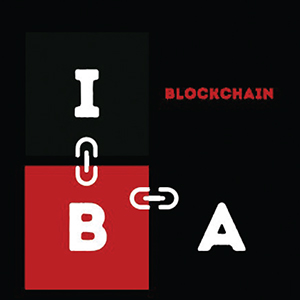
Raj Kapoor, established IBA in 2018, which has now become the most influential voice in the blockchain industry. It is a not-for-profit organisation that promotes evidence- based adoption of Blockchain and Distributed Ledger Technologies (DLT) across the public and private sectors. The alliance is drawn from the worlds of Blockchain, Academia, Information Technology, Computer Science, regulators and policymakers in the field of distributed ledger technologies. IBA is a close-knit network of experts and organisations, connecting policymakers, academics, blockchain engineers, venture capitalists and visionaries.
Blockchain Governance Council
Blockchain Governance Council represents the leaders of blockchain, metaverse, AI/ML, crypto, DeFi, fintech and digital BFSI ecosystem of India and the world. Its reputed members span digital asset solution providers, exchanges, metaverse leaders, awareness and advocacy professionals, audit and investigation leaders and policy think tanks that offer a balanced evidence- based ethical regulatory and policy insight to the governments. The council lends advisory and engages with Indian governments, businesses and the wider community to help support the ongoing creation, development and adoption of digital assets across domains.
The need for AI regulation
By Raj Kapoor,
Founder, India Blockchain Alliance (IBA) Founder, Emerging Technology Council (ETC)
Generative AI will always advance faster than potential rules. As a result, it may be unwise to use the term 'regulations' in this context as a definitive term. Instead, countries and authorities must strive for an oversight structure that is adaptable enough to keep up with rapidly developing technologies while yet providing consumers with basic rights.
Recent advances in generative AI, ranging from the release of ChatGPT in November 2022 to the incorporation of AI in public- facing products such as Microsoft's Bing search and Google's Bard, have sparked a frenzy of activity by governments seeking to stay one step ahead of technological developments over which they have little control. China, for example, has produced draft legislation on generative AI, the US has actively launched conversations on prospective regulations, the EU has a draft AI Act ready and waiting, and the US has released a 'AI Bill of Rights’.
Each of these regulatory advances has been influenced by the domestic economic, technological, and political settings of the individual jurisdictions. In this context, what can countries like India, who have only recently begun to consider potentially regulating AI, do to guarantee that their policies properly safeguard citizens from possible dangers while without impeding innovation? Countries have different motivations for regulating generative AI. China's new laws, for example, are aimed at blocking further breakthroughs in AI technology that could challenge the government's control over the domestic internet and tech area. The EU, on the other hand, prioritises the prevention of harm to individuals in its draft AI Act. The goal of rules must therefore be established in order to determine what the regulations should contain. Three major considerations must be made: the goal of regulation, the development of an accurate liability framework, and the incorporation of necessary regulatory elements.
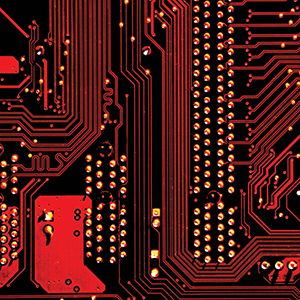
Firstly, fundamentally any generative AI rules should seek to safeguard persons from possible damage. Individuals' privacy and data rights may be violated, or they may face discrimination in access to services or be subjected to demonstrably incorrect or misleading news and information. Protection from these and other evils must be non- negotiable. There is a growing worldwide consensus on the importance of ensuring such safeguards, albeit the granular specifics of practical implementation remain unclear.
Second, to appropriately identify the entities accountable for any harm, the generative AI value chain must be outlined. There are four main actors in any commercial generative AI system: Developers, who create the system; Deployers, who build on the base model to create advanced functionalities for themselves or other third-party customers; Users, who can be individuals, corporations, or platforms who use the AI system internally or through product offerings; and Recipients, who receive the AI system's output.
Finally, any prospective regulations must address two interrelated but distinct issues: the front end and the back end. Front end issues, and thus laws, are focused on the consumer, whereas back end refers to the data sets and training models utilised by the AI system.The recipient, who will most likely be an individual, should be made totally aware that they are interacting with an AI system or that the content they are consuming has been developed by an AI system.
It should be stressed that, by definition, generative AI will always advance faster than potential rules. As a result, it may be unwise to use the term 'regulations' in this context as a definitive term. Instead, countries and authorities must strive for an oversight structure that is adaptable enough to keep up with rapidly developing technologies while yet providing consumers with basic rights. This mechanism, in whatever form it takes, should be based on the real harms that can result from widespread use of generative AI services, and it should aim to 'level up' AI systems by making them more effective for everyone, rather than 'level down' such systems by forcing them to meet substandard output requirements.